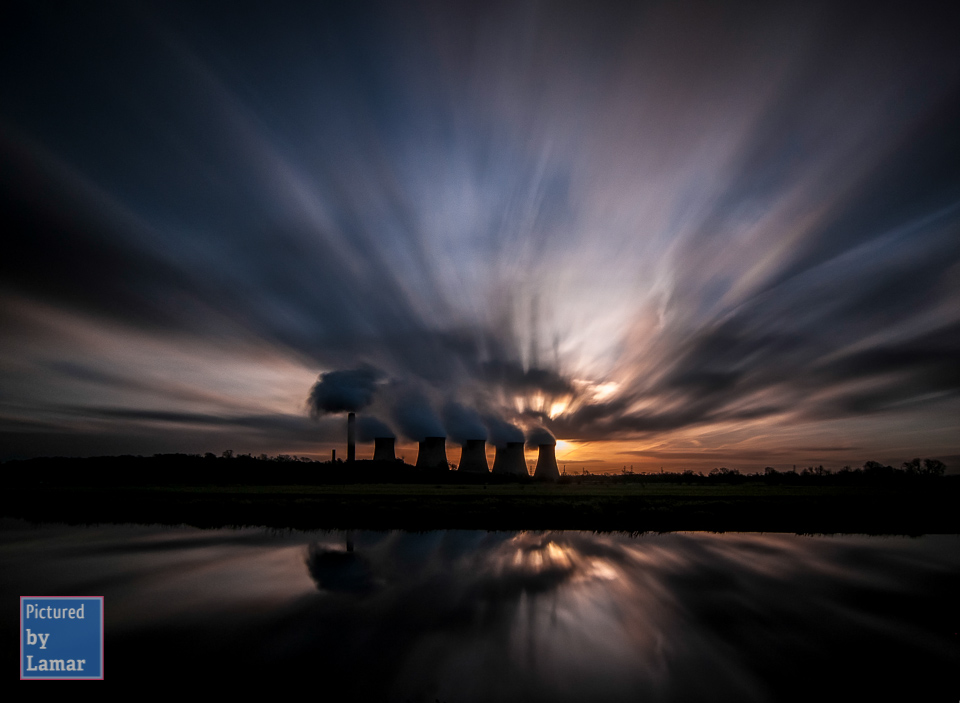Thoughts on the Haida 77mm ND 1000
Over the last few months I’ve gotten to work with the Haida 77mm ND1000 neutral density filter – and now have gotten to know it well enough to be able to form some thoughts on it.
What is an ND (neutral density) filter?
These filters are used in front of the lens to reduce the amount of light from the scene you are photographing from entering your lens – and image sensor . Different coatings on the filter are rated to absorb different amounts of external light before they get to the lens – from ND8 absorbing 3 f-stops to ND64 absorbing 6 f-stops worth of light. The numbering system does have a logic to it which I will explain later. However , in my case I have a particularly extreme ND1000 filter (really 1024 – but marketing likes round numbers!) takes down 10 f-stops worth of light.
This sounds particularly extreme , but is absolutely necessary if you want to go around using long exposures at daytime – and here’s a recent example of a sluice within Colwick Park in Nottingham (60 seconds!). Note what the long exposure does to the textures of the sky and the water – smoothing them out and making for a far simpler , and more effective photograph visually.
In this case I wanted a clear contrast between the textures of the grass on the banks of the Trent , the sluice and the clubhouse – and the water/sky. I needed exposures of at least 15 seconds to begin to get the blur I needed , and the only way of getting that was with the filter. (f/22 without filter would only give me approximately 6 seconds of exposure – and a load of diffraction!).

Beeston Weir , complete with swirling vortices – as seen from the Clifton (Nottingham) side of the River Trent
Using the Haida 77mm Slim PRO II MC ND 1000
On the whole I’ve been very satisfied with the filter – particularly for the value it offers (only £50 from Amazon.co.uk) , with one caveat.
The first thing which is noticable is that compared to the Lee Big Stopper which I’ve borrowed in the past is that far less colour correction is required for the Haida off the bat. In fact , in some cases I might only need to make very slight adjustment for colour images compared to the Lee – which could sometimes really need a lot of work doing to it to get good colours out.
Here’s what I mean. Two RAW files (not side by side) from the D300 in Adobe Camera RAW (ACR) with the default settings and a white balance set to 5000 Kelvin and +1 tint (in the magenta direction):
From what I see also there seems to be very little image degradation arising from the Haida filter too in terms of the pixel-sharpness. I definitely wouldn’t worry about this – and I believe sharpness is something which is perhaps not as important as you’d think.
The only major caveat I have seen is vignetting – and there seems to be a lot of it wider than 13mm on my Tokina 11-16. I don’t have the necessary equipment to exactly measure how much but I would believe it’s at least 1.5-2 stops and possible more than that. Visually this is what it means :
The good news is that it can be corrected , though it does require quite a bit of it! I personally like vignetting with my images as a framing means but this extent of vignetting is a bit much even for me. The falloff looks very apparent and abrupt towards the far edges of the images and hence distracts from the photograph. I’m pretty sure this effect is a consequence of the way the filter is attached to the lens : despite it being a low-profile filter , with the lens being able to see round corners at 11mm there will be some mechanical vignetting.
This effect gets really funky if you decide to stack the filters…. as I did with a similar ND64 recently down at Trent Lock below :

A set of shots of Ratcliffe Power Station as viewed from Trent Lock from one glorious morning back in early December 2013 through the beginning of dusk!
Unless you want to deliberately do that kind of thing the Haida doesn’t play “nicely” with other filters – particularly those which screw in . In that regard the Lee system really comes into its own and provides excellent results for top dollar and you can’t really argue with it.
Another limitation arises from the large 10-stop absorption of light – and this is that it can be a bit much in fading light – you’ll need to allow for this over the course of your exposure calculations otherwise you may get some quite large underexposure. With using daylight flash (your shutter speed is capped at Xsync with a flash) I would much prefer to use a variable ND filter to allow for more flexibility in cutting down the light entering the camera. Especially as flash calculations can get more complicated quickly.
Summary
For £50 from Amazon.co.uk there’s no question that the Haida filter offers excellent value for money , being very easy to work with and post-process while still giving the same results as more expensive £125 screw in B+W filters. The only drawback is with the massive amounts of vignetting present , which is more of a consequence of the way the filter screws into the lens – even with a low profile attach. Lee square filters come into their own when combined in this way.
If you’re not sure if a “Big Stopper” extreme ND filter is for you then this provides an excellent way to find out without breaking the bank too much in the process.
+ reduced colour casts compared to lee big stopper
+sharp images throughout , I see little degradation in the image quality.
+ cheap compared to other two major filters at £50 for a 77mm thread.
– vignetting! Lots of it wider than 19mm FX , possibly a consequence of this kind of filter.
– doesn’t combine well with other filters due to this
*errata 12/1/2014 – I’d in fact used an ND64-rated filter for Ratcliffe Act V shot , offering six stops of light reduction as opposed to just four. Also changed the summary paragraph working slightly for clarity.
1 comment
Leave a Comment



[…] Haida ND 3.0 10 stop filter [Amazon.co.uk] yesterday in the Forest Fields area of Nottingham.I will speak a little more about the filter later* but my first impressions are fairly good. There seems to be far less colour cast produced compared […]